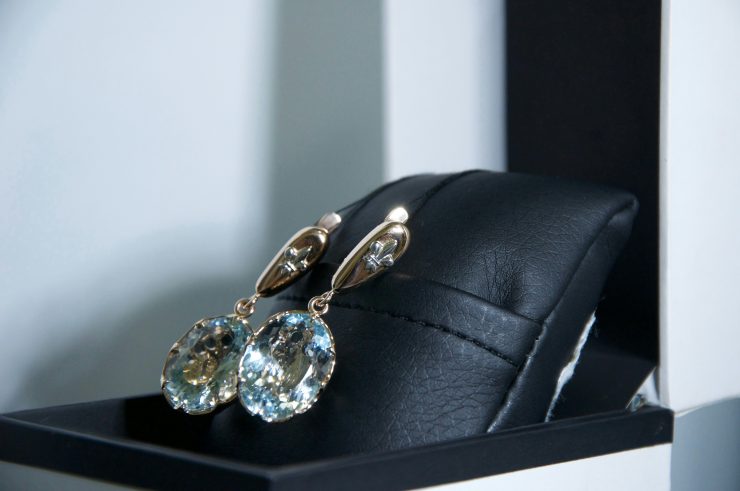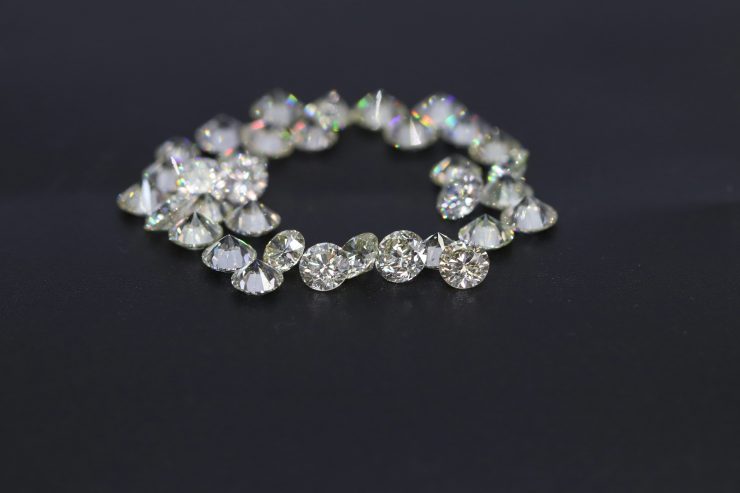Understanding the Importance of Budgeting Before Buying a Diamond
When it comes to purchasing a diamond, whether for an engagement ring, investment, or luxury gift, budgeting is the foundational step that sets the tone for the entire buying experience. Diamonds can vary significantly in price, depending on numerous factors such as carat weight, cut, clarity, color, and certification. Without a well-thought-out budget, it’s easy to become overwhelmed or to overspend on features that may not actually add much value. Establishing a clear budget allows you to narrow your options and focus on what matters most for your particular needs. For example, a buyer more interested in visual impact may prioritize carat and cut, while another more concerned with long-term value may lean towards higher clarity and reputable certification. Budgeting also prepares you to manage related costs like settings, insurance, resizing, and appraisals. In short, understanding how much you are willing and able to spend provides a rational framework that enhances your decision-making process and helps ensure your purchase is both satisfying and financially responsible.

The 4Cs Explained: How They Affect Price and Value
Before allocating your budget, it’s essential to understand the “4Cs” of diamond quality—carat, cut, clarity, and color—as these characteristics significantly influence both the cost and the perceived beauty of a diamond. Carat refers to the weight of the diamond and often has the most direct impact on price, but larger isn’t always better if the other Cs are lacking. Cut determines how well the diamond reflects light; a well-cut diamond can appear more brilliant and even larger than poorly cut stones of the same carat weight. Clarity assesses the presence of internal flaws (inclusions) and surface imperfections (blemishes), which may or may not be visible to the naked eye. Meanwhile, color measures how colorless a diamond is, with completely colorless diamonds being rarer and thus more expensive. When budgeting, it’s critical to understand that a diamond with slightly lower grades in one or more areas can still be visually stunning and far more affordable. For example, a well-cut diamond with slight inclusions (SI1 or SI2 clarity) may look flawless to the untrained eye but cost significantly less than a flawless diamond. Understanding these nuances allows you to make strategic trade-offs that stretch your budget further without sacrificing visual appeal.
Certification and Trustworthy Retailers: Why They Matter
One of the most important aspects of getting value for your money when purchasing a diamond is ensuring that the stone you’re considering has been graded by a reputable gemological laboratory. The most widely respected certification bodies include the Gemological Institute of America (GIA), the American Gem Society (AGS), and to a lesser extent, the International Gemological Institute (IGI). These certifications provide an unbiased assessment of the 4Cs and confirm the authenticity and quality of the diamond. Without certification, it’s difficult to compare stones accurately or confirm that you’re getting what you’re paying for. Furthermore, purchasing from a trustworthy and transparent retailer—whether online or brick-and-mortar—can significantly impact your buying experience. Reputable sellers provide return policies, warranties, detailed grading reports, and often third-party appraisals. They are also more likely to offer fair prices and avoid misleading marketing practices. If you’re shopping online, look for vendors with strong consumer protection measures, high-resolution images, and virtual try-on tools. Budgeting should also include funds for post-purchase needs such as appraisals for insurance, and in some cases, custom settings or maintenance plans. Taking these precautions helps ensure that your investment is secure and your expectations are met.
Setting Priorities: How to Maximize Aesthetics Within a Budget
Once you’ve familiarized yourself with the technical aspects and set your overall spending limit, the next step is to determine your personal priorities. Not all buyers are looking for the same things in a diamond. For example, if you’re seeking maximum brilliance and sparkle, the cut should be your top priority, even over carat weight or clarity. A well-cut diamond will reflect light better and look more impressive, even if it’s slightly smaller or has minor inclusions. On the other hand, if symbolic size is important—common in engagement rings—a buyer may choose a slightly larger stone with minor compromises in clarity or color. Choosing a diamond just under a key weight threshold (like 0.90 carats instead of a full 1.00 carat) can also save a significant amount of money without a noticeable difference in appearance. Similarly, color grades are less noticeable in certain settings or metal choices; for example, slightly tinted diamonds can appear whiter when set in yellow gold. By making informed compromises and prioritizing based on what matters most to you or the recipient, you can get the best possible diamond within your budget. These intelligent trade-offs are essential for maximizing both visual appeal and value.
Hidden Costs to Consider: Beyond the Diamond Itself
When creating a comprehensive budget for a diamond purchase, it’s important to remember that the cost of the stone itself is only part of the total expense. Many buyers focus solely on the price per carat and overlook related costs that can add up quickly. One of the most significant additional expenses is the setting, which can range from a few hundred to several thousand dollars depending on the material (gold, platinum, etc.), complexity, and whether additional gemstones are included. Custom designs or designer settings can raise this cost even further. Other often-overlooked costs include sales tax, which can be considerable depending on your jurisdiction, as well as shipping fees and insurance. Insurance, while optional, is highly recommended for high-value items and usually requires an official appraisal. If the diamond is purchased loose and needs to be set separately, setting fees and craftsmanship charges must also be factored in. Budgeting should account for potential resizing, cleaning, or repairs, especially if the piece is worn daily. By anticipating these extra expenses ahead of time, you avoid unpleasant financial surprises and ensure that your total spend remains within manageable limits.

Shopping Strategies: Comparing Options Online and In-Store
With so many purchasing options available today, from traditional jewelers to online retailers and auction platforms, consumers have more power than ever to compare prices and features. However, each method comes with its pros and cons. Brick-and-mortar stores offer the benefit of in-person inspection and immediate gratification, but their prices often include overhead costs and may be higher than online alternatives. Online retailers like Blue Nile or James Allen often provide greater inventory, competitive pricing, and detailed filtering tools that let you narrow down options based on very specific criteria. Many online stores also offer advanced visualization technology, like 360° videos and magnified images, to inspect clarity and cut in detail. However, purchasing online does come with added responsibility to research return policies, shipping insurance, and guarantees. Some hybrid approaches, such as online platforms with physical showrooms, offer the best of both worlds. It’s a good strategy to use online platforms to establish baseline prices for different diamond grades and then compare them with what is available in-store. Shopping across multiple venues empowers you to find the best value and ensures you’re not overpaying for a stone of equal or lesser quality.
Avoiding Common Pitfalls: Emotional Spending and Sales Pressure
One of the most significant threats to sticking to a budget during a diamond purchase is emotional spending. Because diamonds often represent deep emotional commitments—engagements, anniversaries, or heirlooms—it’s easy to get swept up in sentiment and exceed your planned spending limits. Sales pressure can exacerbate this, particularly in high-end jewelry stores where persuasive sales tactics may encourage you to “upgrade” or opt for unnecessary features. Being emotionally prepared before entering the purchase environment can help you avoid impulsive decisions. Stick firmly to your budget and the list of prioritized features you determined earlier in the process. Consider bringing a knowledgeable friend or advisor with you, especially if this is your first significant jewelry purchase. Another pitfall to avoid is the assumption that a higher price always means better quality; instead, focus on objective measures like certification and your own visual preferences. Finally, beware of misleading marketing terms such as “investment grade” or “limited edition,” which may not have any standardized meaning in the diamond industry. By staying grounded, informed, and skeptical of pressure tactics, you can make a smarter and more financially sound purchase.
Final Thoughts: Creating Long-Term Satisfaction with Your Purchase
Budgeting for a diamond purchase is not just about finding the best deal—it’s about achieving lasting satisfaction with what is often a deeply meaningful acquisition. Whether the diamond is intended as a lifelong symbol of love or a valuable addition to your collection, the experience should be one that combines rational decision-making with emotional fulfillment. Long-term satisfaction stems from knowing that you didn’t overextend yourself financially, that you chose a stone of genuine quality, and that you invested time in understanding the nuances of diamond grading, certification, and market dynamics. Take time to review all details before finalizing your purchase, including the fine print of warranties, upgrade policies, and return windows. Ask for documentation, keep your receipts and certificates safe, and follow up with appraisals if necessary. Ultimately, a well-budgeted diamond purchase leaves no room for regret—it delivers both beauty and peace of mind. With the right approach, careful planning, and informed choices, anyone can secure a stunning diamond that aligns with their values, preferences, and financial goals.